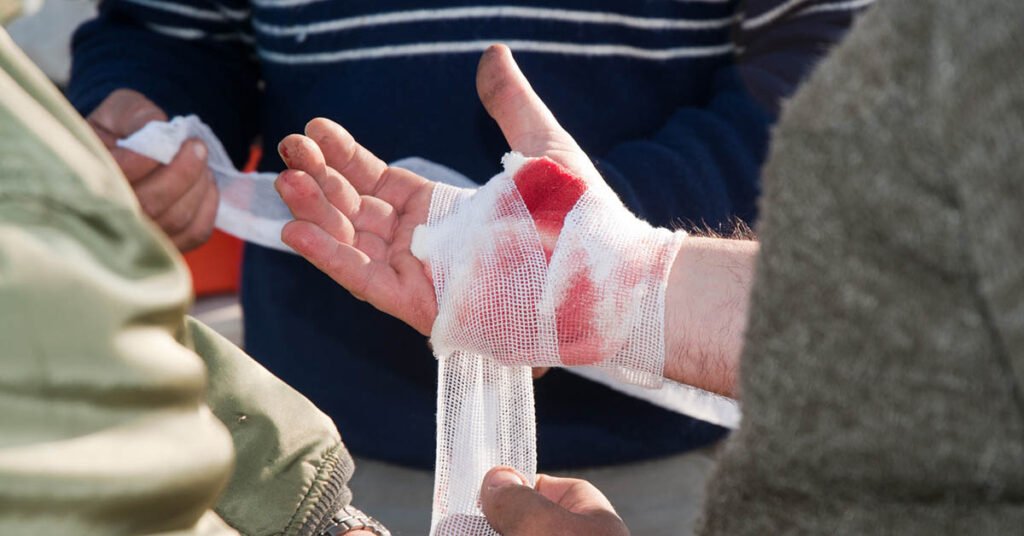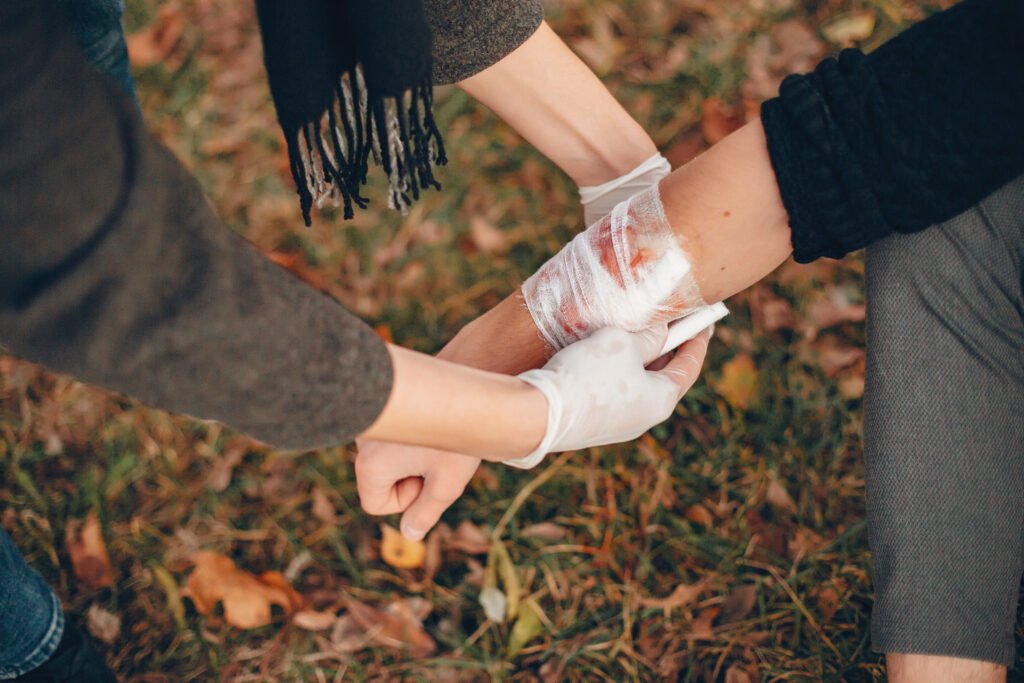First aid is a skill that can be beneficial in various scenarios, from little mishaps to significant occurrences such as natural disasters. Knowing how to react swiftly and efficiently, whether dealing with common errors or more catastrophic injuries from vehicle accidents or home fires, can sometimes determine the outcome of life and death.
Whether the damage is minor or life-threatening, performing first aid may save lives and prevent additional harm.
What is the significance of understanding basic first aid?
First aid is vital for responding immediately to accidents and ensuring that injuries are dealt with swiftly and adequately until a skilled medical expert arrives to offer more specialised care.
Knowing basic first aid tips is beneficial to both you as a person and your society. It allows you to aid those harmed in an accident or emergency scenario until assistance comes because First aid abilities can be used in the home, the workplace, or public places.
Nonetheless, the high-pressure scenario can strain the first responder immensely, raising their stress levels and increasing the likelihood of blunders. These errors can have significant implications, such as aggravating the person’s health, inflicting extra agony or anguish, or even endangering their life.
Fear not; we’ve written this article to assist you with some basic first aid tips and techniques. First aid is an excellent skill to master and is essential for unforeseen circumstances.
Continue reading to learn how to prevent common first aid blunders and be prepared if you ever find yourself in a situation.

6 First Aid Mistakes You Should Avoid
1. Applying ice to a burn
Putting ice on a burn merely leads to blistering and other skin damage. Applying butter and toothpaste are other well-known fallacies that can aggravate an injury.
Treatment for burns should begin with a thorough cleansing and cooling procedure. Run cold water over the burnt area for five to ten minutes. Alternatively, apply a clean, cold, damp towel to the wound. To relieve pain and swelling, use the antibiotic cream and take over-the-counter drugs (such as acetaminophen or ibuprofen).
Remove any clothing that conceals the burn but does not allow it to peel away if it is stuck to the skin. This will exacerbate the damage to the underlying skin.
2. Moving a severely injured person
If you are the first person present at the scene of a catastrophic calamity, such as a car disaster or a severe sports injury, you may be inclined to move the individual to ensure they are okay. Do not attempt it.
Only when there is a threat of imminent danger, such as a fire, explosion, or collapsing structure, is it permissible to relocate a patient in this manner?
All you should do is call 999 for an ambulance. When dealing with a potential spinal cord injury, the best action is to let a certified medical officer take the victim to the hospital.
3. Do not assume the individual is conscious.
It’s not always simple to detect if someone is entirely aware and mindful of their surroundings – and it’s not always as straightforward as you may believe. Some classic symptoms that someone is not wholly aware of their surroundings include a struggle to keep their eyes open, slurred speech, and languid muscles and limbs.
If you observe any of these signs, check the person’s breathing. If someone isn’t reacting to you and appears to be fighting to breathe, they might be in cardiac arrest. Then, begin CPR (chest compressions and rescue breaths) until emergency personnel arrive.

4. Do not Lean Back during a nosebleed.
Leaning back during a nosebleed is a typical first aid blunder that causes the blood to trickle down a person’s throat and be swallowed. Swallowing blood can cause stomach discomfort and vomiting. Leaning back during a nosebleed does not affect the bleeding.
Lean forward instead and pinch the tip of the person’s nose. Let it run for 10 minutes and see if it stops. If this does not help, see a doctor immediately to discover the problem.
5. Never tape over a bleeding cut.
Putting tape directly over a bleeding wound is one of the most common first aid blunders committed by persons responding to a cut or laceration. Applying tape to a bleeding amount might retain fluids (rather than absorbing them, as a bandage would). It’s also not sterile, which increases the likelihood of infection.
In an emergency, instead of taping a cut shut, clean it first and apply gauze or a clean towel or cloth if you’re low on medical supplies.
Of course, if you have a first aid kit, utilising pressure dressings like an ACE bandage to halt bleeding is a far better option.
6. Inducing vomiting in those who have consumed poison
Poisoning happens when a material that can cause disease, damage, or death is breathed, swallowed, absorbed, or injected into the body. Poison is any material that, in sufficient quantities, may cause harm, such as:
- Medications
- Supplements and herbal medicine
- Alcohol and other narcotics
- Chemicals
- Animal and plant venoms and poisons
Inducing vomiting in a poison victim is risky and ineffectual to eliminate the poison from their system. It not only does not consistently stop the toxin from the patient’s body, but it can also cause throat injury and endanger the patient’s airways.

The Bottom Line
It’s always a good idea to be prepared for crises. Some of the most common first aid errors include failing to seek help quickly enough, being unsure what to do, and assisting a casualty despite the risks thus becoming a casualty themselves. People’s biggest mistake is expecting they’ll know what to do in an emergency.
Don’t allow yourself to become a cautionary tale if someone close to you is involved in a medical emergency. Acquire the information and abilities with some basic first aid tips so you’ll need to make a difference and be prepared for any kind of situation!




